The Colorado Springs Independent recently published an article about laboratory concerns within the Colorado State crime laboratory system. The article written by Chet Hardin was called “Blood and circus: Why many DUI lawyers don’t trust the state’s drug lab.” One of the issues discussed was the problem of ethanol being detected in blanks.
The governments position of “trust us, everything here is fine, move along now” on this error is troubling and we thought it was worthy of discussion on The Truth blog. Here is the background and why they are flat wrong.
Basic Background Information for Understanding
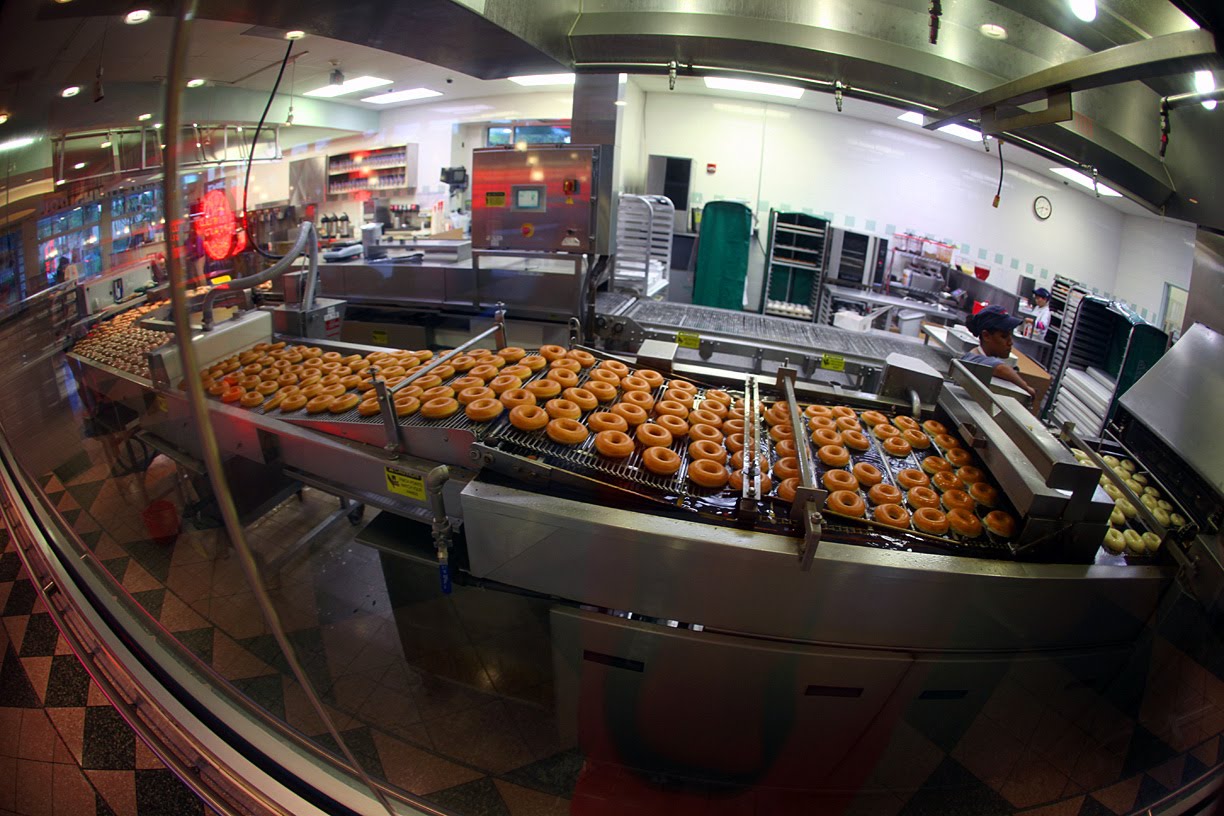 Most of you have probably been to a Krispy Kreme doughnut store (if you haven’t then you should) and seen their fancy doughnut assembly line. It is doughnut after doughnut going through the steps until the entire “batch” of doughnuts is complete and the customers are happy. Blood testing by Gas Chromatography is kinda the same. Its vial after vial after vial until the “batch” is complete. Each vial is either an accused citizens blood or a step in the setup process of the machine. Citizen after citizen’s blood sample is tested back to back over and over. The collection of all the vials (or all of the doughnuts to be cooked and iced) are known as a “batch.” Blood samples are all tested in a batch just like the doughnuts are all cooked up in a batch.
Most of you have probably been to a Krispy Kreme doughnut store (if you haven’t then you should) and seen their fancy doughnut assembly line. It is doughnut after doughnut going through the steps until the entire “batch” of doughnuts is complete and the customers are happy. Blood testing by Gas Chromatography is kinda the same. Its vial after vial after vial until the “batch” is complete. Each vial is either an accused citizens blood or a step in the setup process of the machine. Citizen after citizen’s blood sample is tested back to back over and over. The collection of all the vials (or all of the doughnuts to be cooked and iced) are known as a “batch.” Blood samples are all tested in a batch just like the doughnuts are all cooked up in a batch.
Like the doughnut assembly line, where the same exact equipment is used for every doughnut, the same exact equipment is also used for every vial in a blood testing batch.
However, unlike when making doughnuts, where we are not concerned with contamination from one doughnut to the next, in blood testing we absolutely are concerned about contamination between vials. We MUST be concerned if the reported result of vial #7 might have been contaminated by vial #6. What that means is that citizen John Doe’s sample in vial #6 might have contaminated Jane Doe’s vial #7. This is called “carry-over.” If vial #6 contained a sample with a high ethanol amount there is a real chance that the ethanol might “carry-over” to the next test and contaminate vial #7. That would obviously be unfair to Jane Doe.
So the question becomes:
How does a lab assure us that there is no contamination or “carry-over” from one vial to another in a batch?
By using what we call a blank.
A blank is exactly what it sounds like. It is a vial that has nothing* in it. Here is the way it works. You run an analysis on a blank and the analysis should show that there is nothing in the sample. You know there to be nothing in the blank because you made it. (unlike a citizens sample that you have no idea what or how much is in it, if anything at all) If there is any peak in the analysis of the blank then you made a mistake and you have proven carry-over. Somehow, somewhere in your process, you have contaminated the blank. This is not good. The vials in the entire batch must be scrapped and start all over again.
A lab should run a blank between every single vial. So far, they refuse to do so. Instead they run a blank once in a batch or once every 10-20 vials if they run a blank at all. This would give some form of assurance that ethanol from one vial is not carrying over into the next vial because if it were it would show up in the blank.
What is even worse than that is the epidemic sweeping across the US where labs are proving contamination by finding other substances in the blank and then they are trying to deny its existence. Their usual excuse is one of two equally ridiculous and dishonest statements.
1) That is just a “ghost peak” or “noise” and its not really something in the blank.
2) That is such a small amount that it doesn’t matter and is not worthy of our disclosure or retesting.
Lets take each of those arguments individually:
“Its just a “ghost peak” or merely “noise” and is not really a substance in our blank” – dishonest government expert
First of all there can be noise but not like what we are talking about here. We are talking about symmetrical peaks that rise above the baseline noise that is present. This is not noise, this is something being detected in the sample. This is contamination. Period.
“Its such a small amount that is doesn’t matter and is not worthy of our disclosure or retesting.” – dishonest government expert
Anytime there is a blank with ethanol in it that is ABSOLUTE PROOF of carry-over or contamination. Period. When carry-over is present in one vial, it is fairly certain that it will be present in other vials as well. How much in each one? Who knows. But there is proof of carry-over present. Could it be more for an accused citizens sample than with the blank? Absolutely. Could it be a lot more? Certainly. We have no idea how much it changes from vial to vial. What we do know is that carry-over is undeniably present. Any ethanol carry-over will only work to the detriment of the citizen accused, as it will never make the reported amount go down. It will always make the reported ethanol artificially high.
Bottom line, what ethanol being present in a blank tells us is that the reported result of an accused citizens BAC will be falsely high. How much so, we don’t know. But undeniably falsely high.
Does that sound like good science? This is the government asking us to blindly trust them. We cannot do so. When it comes to placing possibly innocent people in jail, we can not blindly trust the governments opinion and instead we must demand proof. The principle of “close enough for government work” should have no place in a forensic science.
This is a huge problem across the United States.
Here is a copy of the scientific method. Do you see a step of “trust me” in the scientific method? Isn’t that what the government is asking you to do? When making doughnuts, the consequences of a mistake is a bad doughnut. In forensic science the consequences are loss of freedom and life. Why don’t forensic labs take it that seriously?
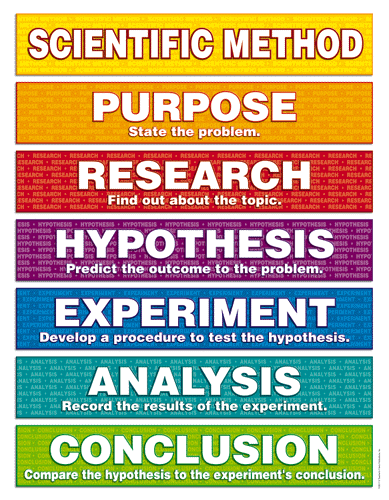
* – Nothing other than the internal standard. Unless the lab is taking the unusual step of running a true blank, there should always be a single peak or substance in the blank, the internal standard n-propanol.


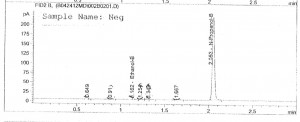
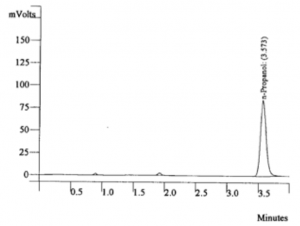
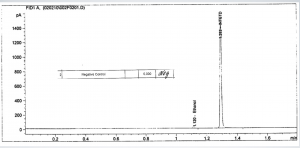
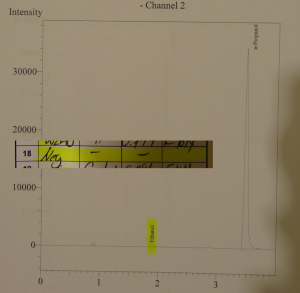


One response to “Doughnuts and Blood Testing – How the government’s own data often proves that they contaminate blood samples and look the other way”